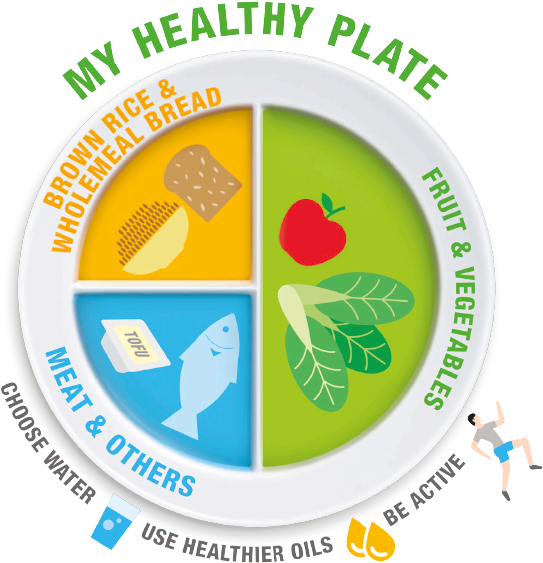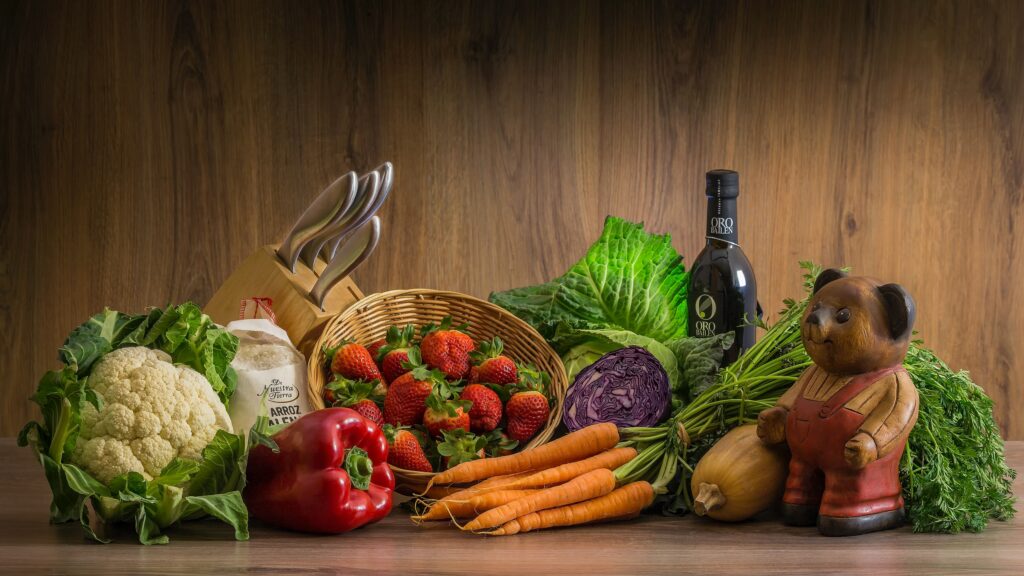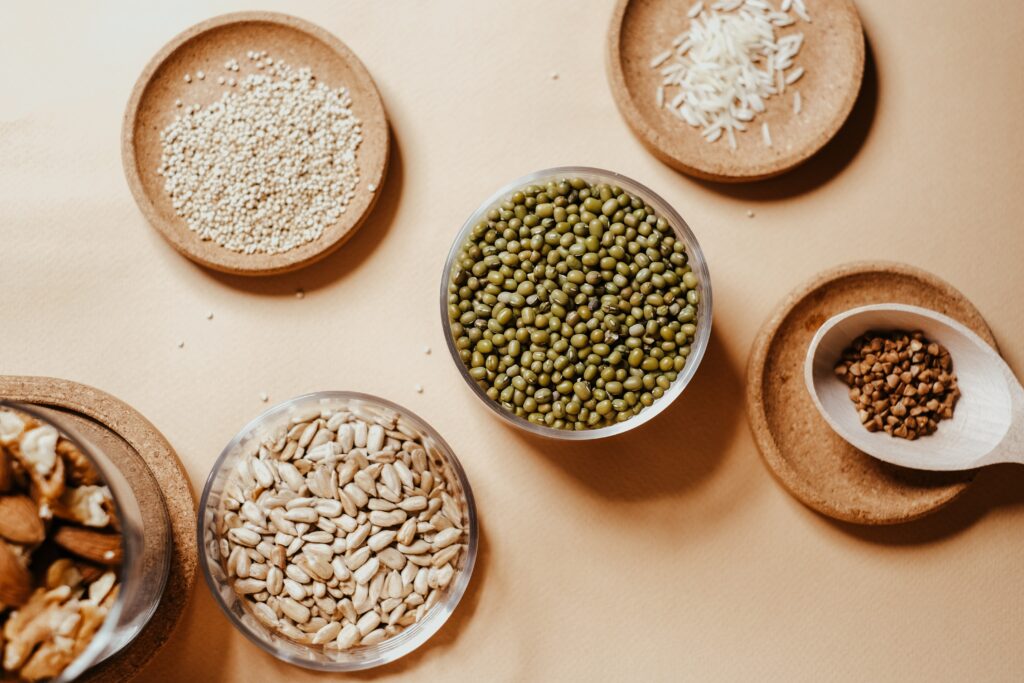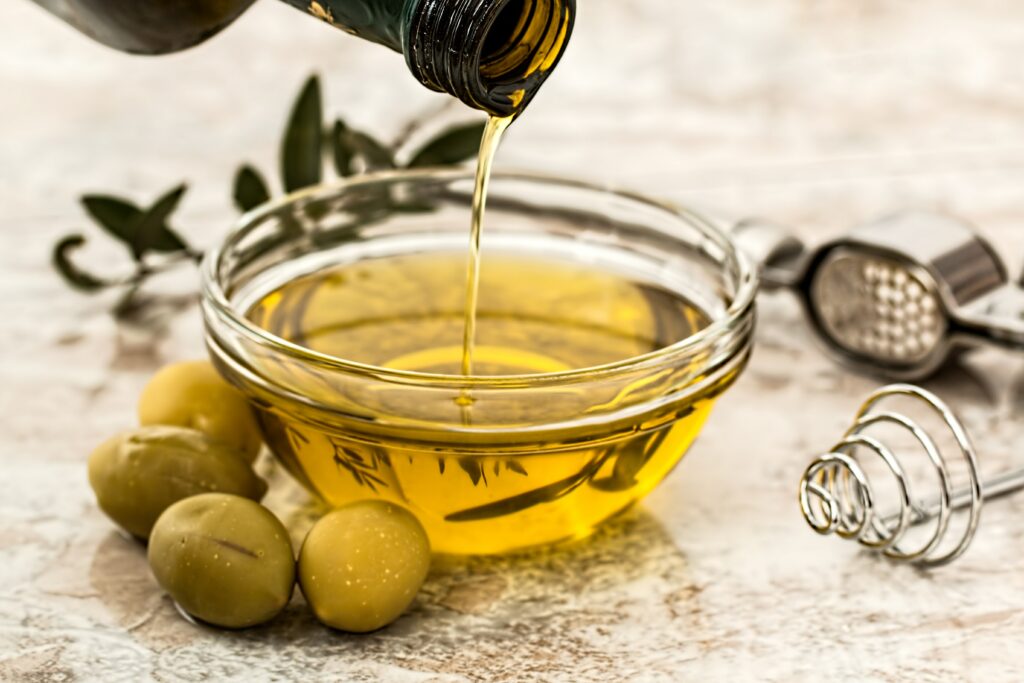Are you a vegan living in Singapore or planning to visit the Lion City? Embracing a plant-based lifestyle in a foreign land can be both exciting and challenging. In this article, we’ll provide you with vegan tips on how to eat healthy in Singapore, the essential vegan ingredient list, and top vegan restaurant in Singapore right here at The Club. Prepare yourself for a captivating culinary journey that embraces your ethical preferences and satisfies your taste buds.
Table of Contents
My Healthy Plate Model

When it comes to maintaining a healthy vegan diet, the “My Healthy Plate” model is a great guide for both beginners and long-term vegans. This model, introduced by the Health Promotion Board (HPB), promotes balanced eating habits for everyone. While the original model includes meat and alternatives, HPB has adapted it to suit a vegan lifestyle, which includes:
- Half of your plate to consist of fruits and two servings of vegetables
- Fill a quarter of your plate with whole grains (rice and alternatives)
- A quarter of your plate should be for meat and alternatives
- Use small amounts of healthier oils
Fruits and Vegetables

A rainbow of fruit and vegetables
Build your healthy meal with the vibrant spectrum of colors found in fruits and vegetables, as each color brings its own set of valuable health benefits. These natural pigments not only add visual appeal but also provide necessary nutrition that protect your body.
- Red (cherries, red apples, tomatoes, watermelon, etc.): With antioxidants like lycopene, anthocyanins, ellagic acid, and astaxanthin, red fruits offer many health benefits. Lycopene, responsible for the red color, supports lower blood pressure and cholesterol. Other antioxidants aid in decreasing the risk of heart disease, certain types of cancer, and lowering skin damage caused by sun exposure.
- Yellow and orange (pumpkin, cantaloupe melon, nectarines, etc.): Yellow and orange fruits are rich in carotenoids like alpha-carotene, beta-carotene, and beta-cryptoxanthin, which provide their vibrant color and are converted to vitamin A. These fruits are packed with fiber, folate, potassium, and vitamin C, promoting cancer prevention, heart health, and maintaining good vision.
- Green (avocados, cucumbers, green grapes, lettuce, etc.): Green fruits and vegetables are rich in potassium, which is beneficial for heart health, and vitamin K, which supports blood clotting. Additionally, the nutritions in green fruits and vegetables contribute to maintaining good vision and promoting the strength of bones and teeth.
- White (mushrooms, bananas, onions, etc.): White fruits and vegetables contain anthoxanthins, the pigments responsible for their white or cream colors. They provide heart-healthy benefits and aid in cholesterol control. The anti-inflammatory and antioxidant properties of these fruits contribute to reducing the risk of heart disease, colon cancer, and other forms of cancer.
- Blue and purple (Plums, purple grapes, eggplant, etc.): The vibrant colors of blue and purple fruits and vegetables come from anthocyanins. These foods support urinary tract health, enhance memory function, and contribute to healthy aging.
Benefits of fruit and vegetables
- Add volume to your plant based meal: With the high water and fiber content found in fruits and vegetables, you can easily feel full with just a bowl of salad. They also help your body maintain healthy digestion and reduce the risk and impact of various diseases.
- High content of vitamins and minerals provided by fruits and vegetables are essential to your body, as some of them cannot be produced independently by the human body.
- Cutting down calorie intake: Substituting higher-calorie foods with fruits and vegetables can help to reduce your overall calorie intake. This not only assists you in weight management but also lowers the risk of high blood pressure.
Whole grains

Three edible layers of whole grains
All grains including wheat, rice, barley, maize (corn), and rye, start out as whole grains. But to keep that name, these grains have to retain all three layers in their original proportions after milling:
- Bran: Abundant in fiber, vitamin B, minerals, and phytochemicals, which are beneficial compounds produced in plants.
- Endosperm: Primarily composed of carbohydrates and proteins.
- Germ: Bursting with vitamin B, vitamin E, trace minerals, and phytochemicals, contributing to its nutritional value.
Benefits of whole grains
- Weight management: The fiber found in whole grains slow down the digestion progress and make you feel fuller for a longer time.
- Contains resistant starch: Resistant starch, found in whole grains, is not easily digested in the small intestine. Instead, it ferments in the large intestine, acting as a prebiotic for beneficial probiotic bacteria. Consuming 15-20 grams of resistant starch daily is recommended to promote the growth of beneficial bacteria in your digestive system.
- Reducing the long-term risk of chronic diseases: Whole grains are a good source of fiber, vitamins, minerals, and antioxidants. They are also low in calories and fat. The presence of these nutrients has the potential to mitigate the risk of chronic conditions, including heart disease, stroke, type 2 diabetes, and certain types of cancer.
Protein Alternatives
Sources of protein
Protein is a vital nutrient your body needs to work properly. It helps your body to grow and repair cells. Protein-rich sources are poultry, red meat, fish, seafood and eggs. Plant-based eaters can consume alternative sources such as:
- Soy products: Soy products are the undisputed king of plant-based proteins as they are rich sources of protein and essential amino acids. Not only does it provide your body with enough nutrition, these products are also easy to cook. Tofu can be used in stir-fried dishes and soups, while tempeh can be marinated and grilled. For soybeans, you can turn it into soymilk, add it to smoothies, or as a plant based ingredient to your curry dish.
- Lentils: This is an exceptional meat alternative. Containing over 25% protein, lentils are an excellent choice for plant-based protein. With its versatile nature, lentils come in various colors and can be incorporated into a multitude of dishes, including soups, stews, curries, and salads. Along with being a rich source of protein, lentils provide essential minerals like iron and folate, making them a nutritious addition to a well-rounded diet.
- Peanuts: are a delectable legume that offers a rich source of protein. They also provide a range of vitamins and minerals such as biotin, copper, niacin, vitamin E, and phosphorus. Whether consumed as a one-ounce serving of peanut or two tablespoons of peanut butter, they offer a nutritious and protein-packed option for a satisfying snack.
- Almonds: Although almonds are technically seeds, they are often categorized as nuts and recognized for their high protein content. Almonds are renowned for their abundant antioxidants, which safeguard the body against oxidative stress induced by free radicals. This protective effect may help reduce aging, the risk of heart disease, and potentially mitigate certain types of cancers. They serve as a satisfying snack, can be sprinkled over salads or oatmeal, and are commonly utilized in making almond milk.
Benefits of protein
- Building and repairing: Protein is an essential building block for bones, muscles, and skin, serving as a vital component. Notably, protein contributes to the formation and repair of tissues, while also playing a significant role in the development of hair and nails.
- Digesting: Approximately half of the dietary protein you consume contributes to the production of enzymes, aiding in food digestion and the creation of new cells and body chemicals.
- Regulating: Protein plays a vital role in regulating hormones, especially during the transformative stages of cellular development in puberty.
Healthier Oils

While the model suggests using small amounts of healthier oils, it’s important to note that not all oils are suitable for a vegan diet. Opt for plant-based oils such as olive oil, coconut oil, avocado oil, or sesame oil, which offer beneficial fats and distinct flavors. These oils can be used for cooking, dressing salads, or adding a finishing touch to your dishes.
Vegan tips to eat healthy
Healthier drinks
Opting for water as your primary choice of beverage promotes better hydration and helps cut down on unnecessary sugar intake, like coffee and sweetened drinks, which can cause higher blood pressure, inflammation, diabetes, and fatty liver disease. A small tip for you to stay hydrated throughout the day is carrying a reusable water bottle wherever you go.
Carry healthy snacks with you
To avoid reaching for unhealthy snacks, prepare yourself some nutritious snacks and keep it in your bag. This way, you can satisfy the cravings with options such as fresh fruits, nuts, or homemade energy bars. Having these healthy snacks readily available can support your efforts to make better food choices.
Plan your meals meticulously
By carefully planning your meat free menu, you have complete control over your nutritional intake, making it easier to avoid unhealthy food temptations and build a balanced meal plan. According to the My Healthy Plate model above, you should include vegetables, fruits, whole grains, and protein or suitable protein alternatives.
Vegan options at the Club
Are you wondering how to eat healthy in Singapore as a vegan? Good news! The American Club Singapore recognizes the growing demand for plant-based dining and offers a range of delicious vegan options to cater to your dietary preferences. Whether you’re a Member or a guest, you can indulge in a variety of delectable plant-based meals crafted with creativity and care. From flavorful salads and nourishing grain bowls to innovative plant-based burgers and mouthwatering vegan desserts, The American Club Singapore strives to provide a satisfying and enjoyable dining experience for vegans. So, get ready to explore a world of vegan food in Singapore and embark on a culinary journey by visiting our meat free menus below:

Tips: The icons in our menus help you to navigate better. For plan-based eaters, look for the vegetarian icon.



















